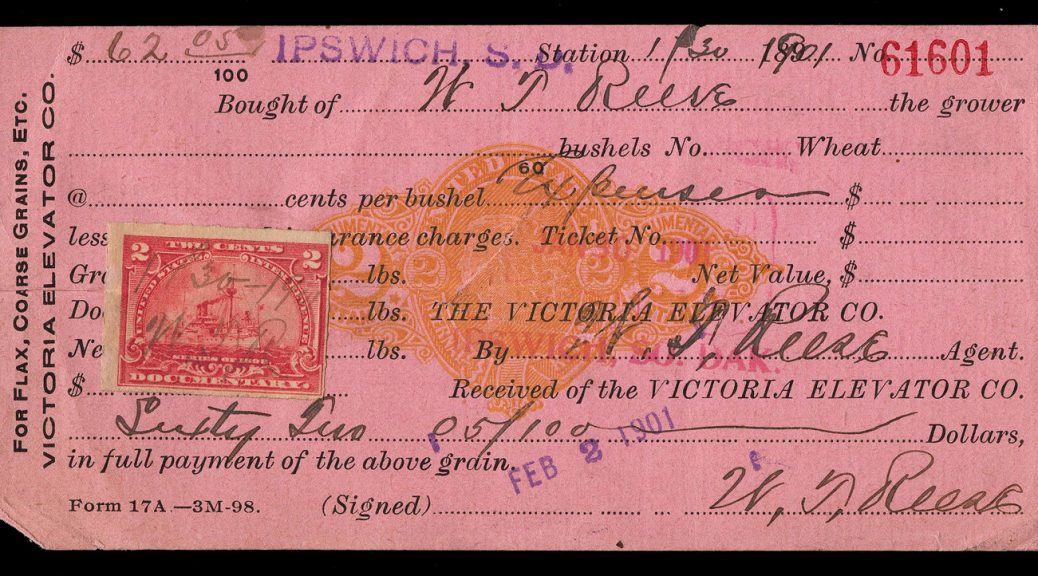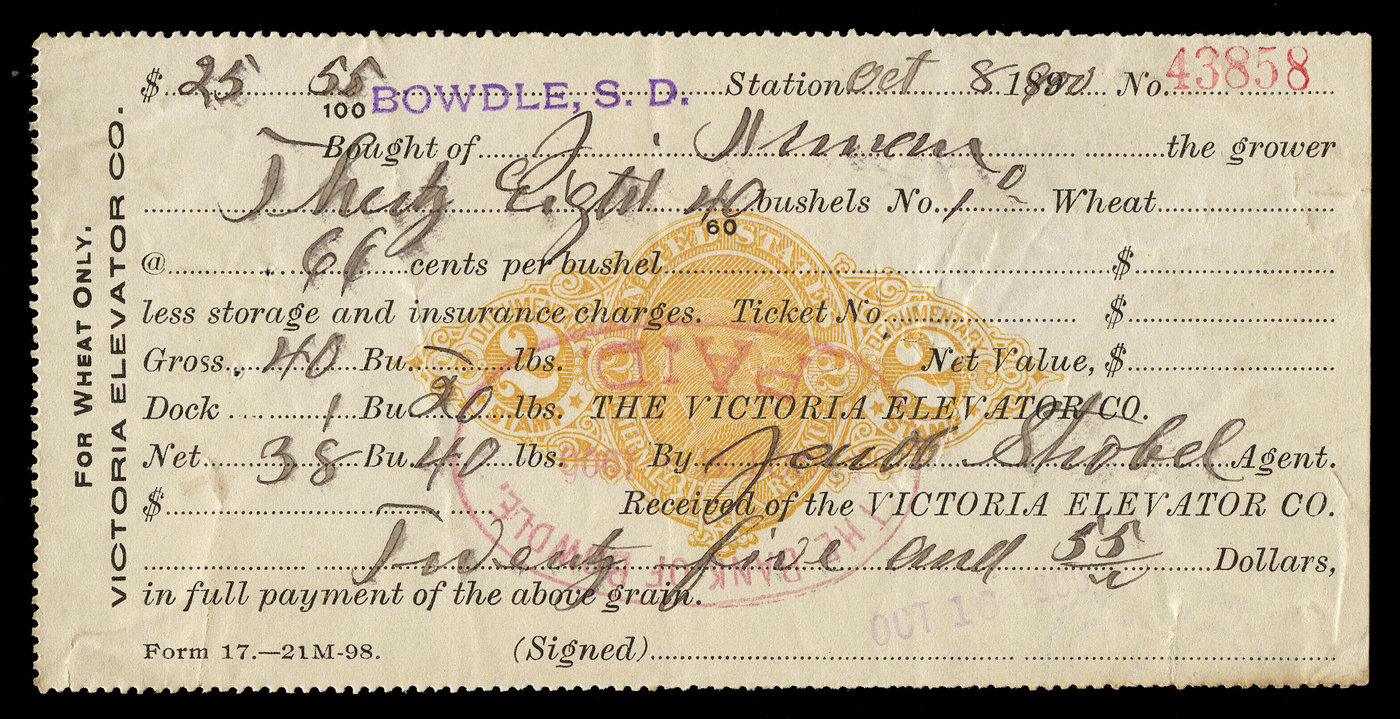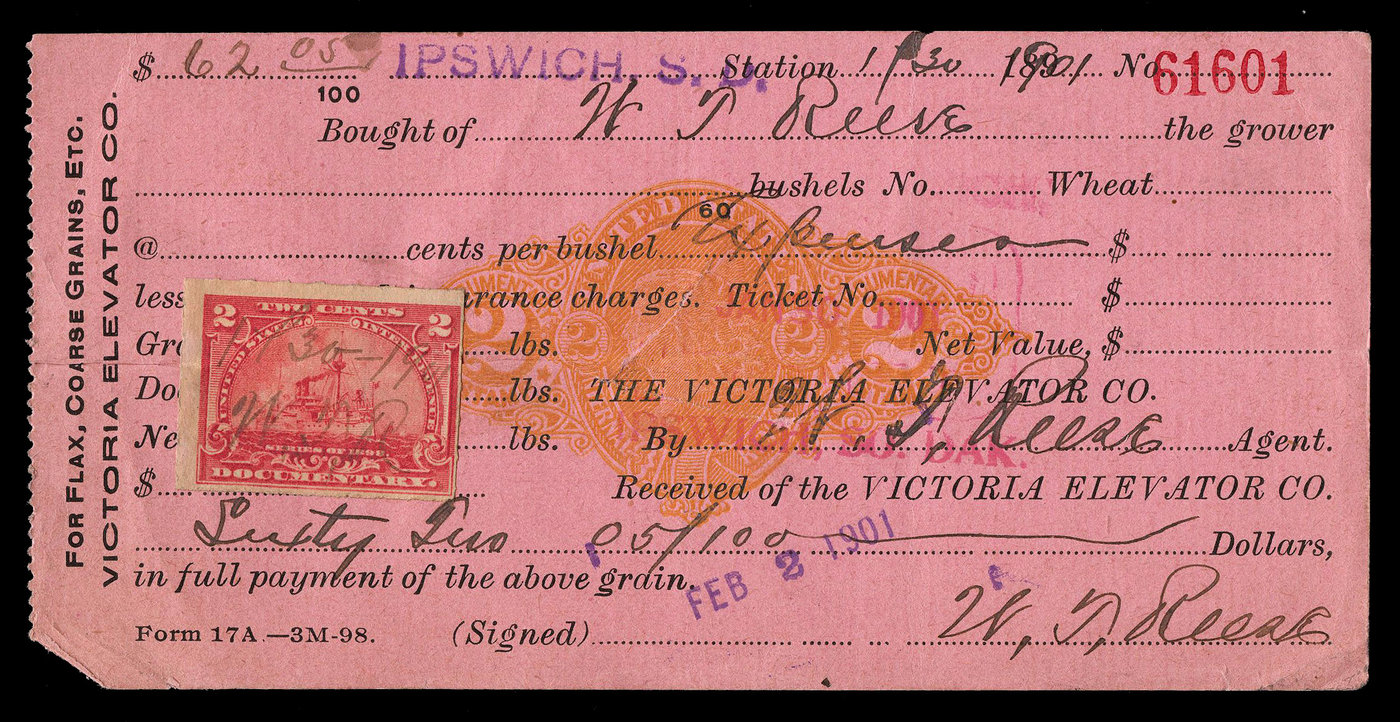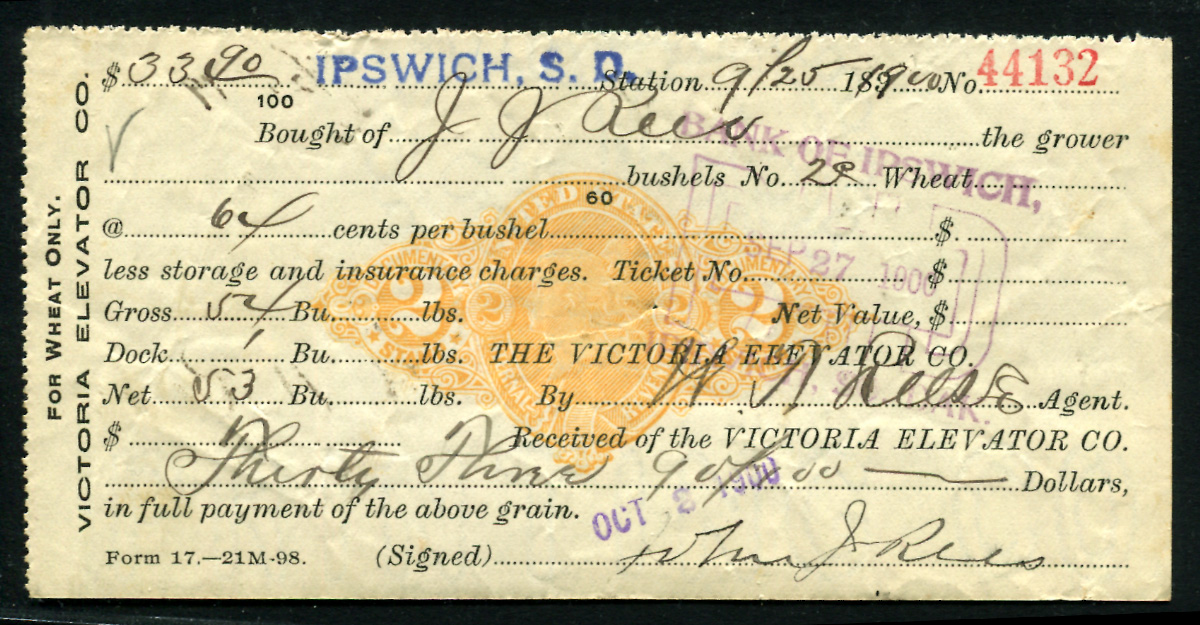
Question About Revenue Stamped Paper RN-X7 Victoria Elevator Co. Receipts
Shown below are 3 different RN-X7 receipts from the Victoria Elevator Co., used in different cities in South Dakota. They are very similar. My question concerns the third one listed. What is the second transaction that would have incurred the additional tax, thus precipitating adding the battleship revenue stamp?
I couldn’t find any exact comparables online.
I thought it might have to do with the fact that it’s the only one out of the 3 that is actually signed, which could be material, but then I found one on Eric Jackson’s website (shown last) that is also signed (appears to be same signer as the receipt in question), but there is no additional tax.
Thanks.
From Eric Jackson’s inventory:
From Bart Rosenberg:
It was a payment for expenses. I could not find anything specific in the 1898 tax laws, however I suspect that the first two cents was for the document itself and the other two cents was for the bank actually paying out the expense money from the account. Two transactions. The others are just receipts of money paid TO the company. One transaction.
From Ron Lesher:
I have talked to Frank Sente, the expert on the 1898 taxes. The imprinted revenue is placed on the document because these are drafts. The farmer took these to the bank and cashed them or deposited them in his/her account. We still do not have an answer as to why the added 2¢ battleship was added. Can we get a scan of the reverse of the draft in question? I have some ideas but need to see what is on the reverse.
Just to reiterate. These are not receipts. They are drafts for payment.
My reply:
Now I’m even more confused. Eric has these all listed as receipts, and the language “Received of the Victoria Elevator Co. XXX Dollars in full payment of the above grain” implies receipt to me.
From Ron:
Regardless of the language these functionally were drafts. There was no tax on receipts in 1898.
From Bart:
Tax on drafts was 2 cents for the first $100 or fraction and 2 cents for each additional $100 or fraction. So there was still no need for the additional 2 cents. Also any order to pay (which this might have been considered since it is a payment for expenses) was also 2 cents. So unless this was considered to be both, which seems unlikely, I can find nothing in the laws to explain this.
Any other thoughts?



